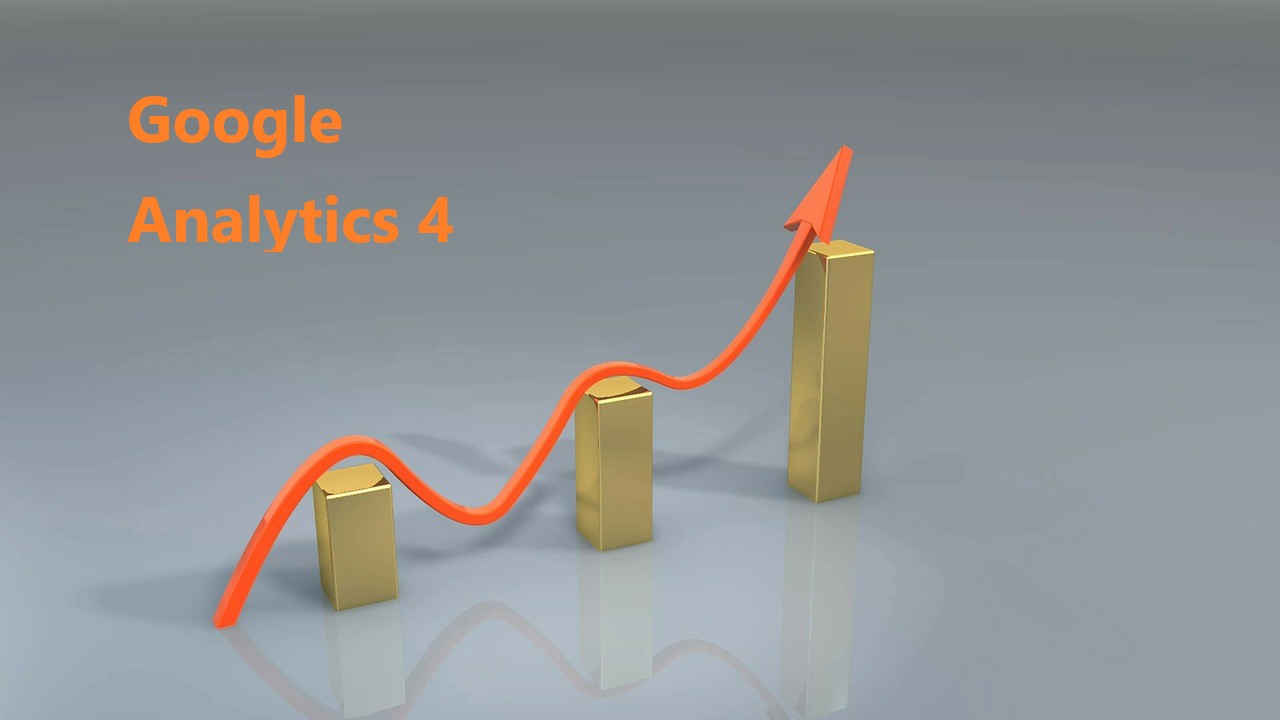
On July 1, 2023, Google Analytics 4 will replace Google Analytics. Now is the time to learn how to get started with GA4!
GA4 has a very different data structure and data collecting algorithm. Everything is now built around user and events, rather than sessions, as we’ve come to expect. Each user interaction is treated as a separate event in an events-based approach. Marketers get significant advantages by shifting their attention from sessions to events, such as cross-platform analysis and increased pathing analytic capacity.
GA4 integrates web and app analytics together, allowing your business to develop a smarter, data-driven marketing strategy by tracking both web and app analytics at the same time. GA4 has become more flexible and capable of predicting user behavior by switching to an event-based approach.
How To Set Up GA4
GA4 is easy to set up with just a few clicks.
This article will show you how to link a new GA4 data stream to your existing Universal Analytics account.
Steps for configuring GA4
- Log into your Google Analytics account
- Go to the bottom left navigation and click Admin.
- From the “Account” column, select your account.
- From the “Property” column, choose your Universal Analytics property.
- In the Property column, click “GA4 Setup Assistant.”
- Click “Get started”.

Click the big blue button labelled “Get Started “once you’ve entered the Setup Wizard.

You’ll see the next screen
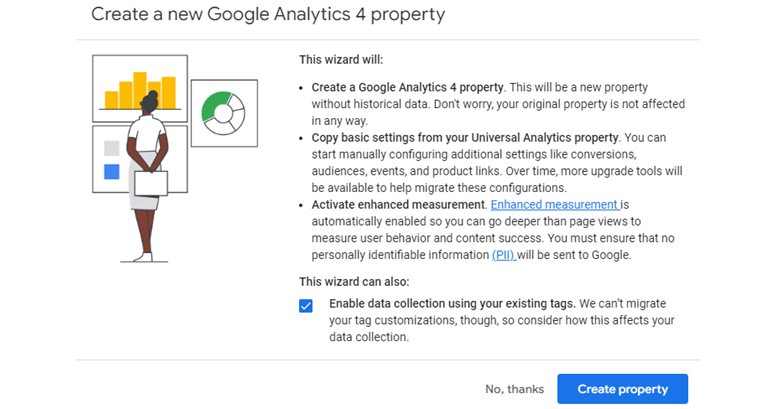
Important: The GA4 setup help integrates with gtag.js automatically. You’ll have to manually add the Analytics tag if you’re using a website builder like WordPress or Wix.
Event Tracking
The setup assistance will turn on enhanced measurement in your Google Analytics 4 property when you’ve finished creating it.
Third-party widgets and form submissions still require custom code, but the most basic forms of event tracking are automated and ready to use.
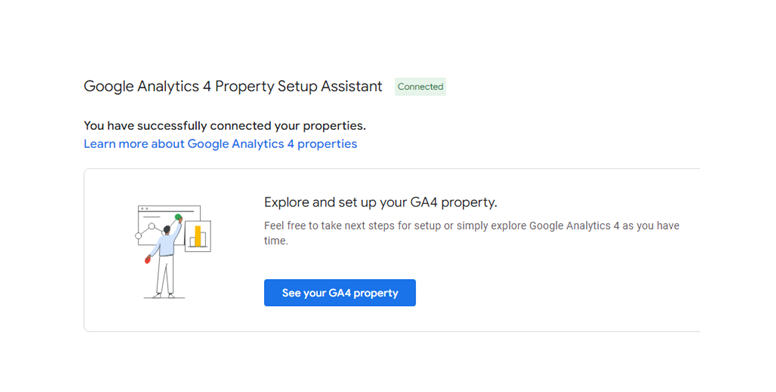
What role does GA4 play in reporting?
GA4 is a cutting-edge technology that employs advanced machine learning techniques to help fill in the gaps in missing data. Creating a unified user experience for all data associated with the same identity.
GA4’s reporting interface has been simplified, making it much easier for marketers to discover critical trends and anomalies in data.
The following are three of the most advantageous features of Google Analytics 4:
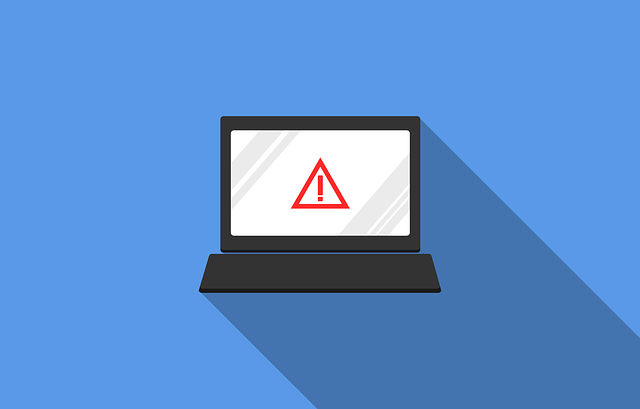
GA4 gives you automatic alerts to improve your marketing ROI
GA4 can assist in predicting customer behavior. GA4 might, for example, construct models that calculate a group’s potential revenue or the churn rate of distinct user segments.
When patterns begin to emerge in your data, G4 can send you an automatic alert. In the event that your company starts selling more of Product A, Google Analytics 4 will notify you before you notice an upward trend in sales.
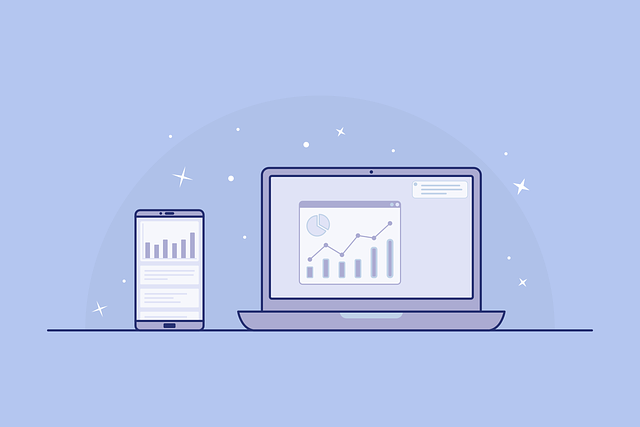
With GA4 audience data, you can make your marketing initiatives smarter
Another advantage of Google Analytics 4 is the ability to combine data from your website and app. The GA4 provides a future-proof solution in case you decide to develop an app in the future. In addition to syncing your website and app data, GA4 allows you to monitor user behavior based on where they are in the buying funnel, such as awareness versus conversion.
You can build a better marketing strategy if you have a better grasp of how people act at different phases.

Future-proof your marketing strategy with GA4
With a growing focus on user privacy and a shift away from cookie-based tracking, analytics services like Google Analytics must adapt. As a result, GA4 offers a solution that does not rely on cookies to function.
Is it time to upgrade to Google Analytics 4?
If you’ve been using Google Analytics for a while, you’ve undoubtedly spent a lot of time learning about reports, figuring out how everything works, and perhaps even incorporating custom tracking into your system. You’re probably also pleased with the results provided by Universal Analytics. It’s possible that you’ll utilize it to send reports to clients or other stakeholders.
Even if you don’t plan to use it immediately, collecting data will strengthen your machine learning (ML) models in the future, which makes your analyses more insightful. You can create a GA4 property to work alongside Universal Analytics.
You may compare the two platforms and ensure that you’re obtaining all of your data on both via parallel tracking. Your Universal property will still catch all of your data if you make a mistake in your GA4 configuration or if a tracking feature is absent. In the meantime, you can experiment with GA4 and learn all of its new features.
Types of Analysis
Let’s take a look at some of the Analysis Area’s fundamentals. The structure of all approaches (reports) in the Analytics Area is the same. Multiple reports structured in tabs can be found in an analysis. All of the analysis’ reports can be exported and shared.
Overall, the analysis area looks more like Google Data Studio than traditional Google Analytics reports. At first appearance, the complexity of possible analysis appears to be quite diverse.

Conclusion
One of your most effective marketing tools is an analytics tool. It aids in the development of a better knowledge of website traffic and user behavior once on the site.
GA4 is the analytics upgrade we’ve all been waiting for. It gives marketers more freedom and a way to forecast user behavior while maintaining user privacy.
GA4’s versatility and better insights are more than worth it once you’ve gotten beyond the learning curve.
